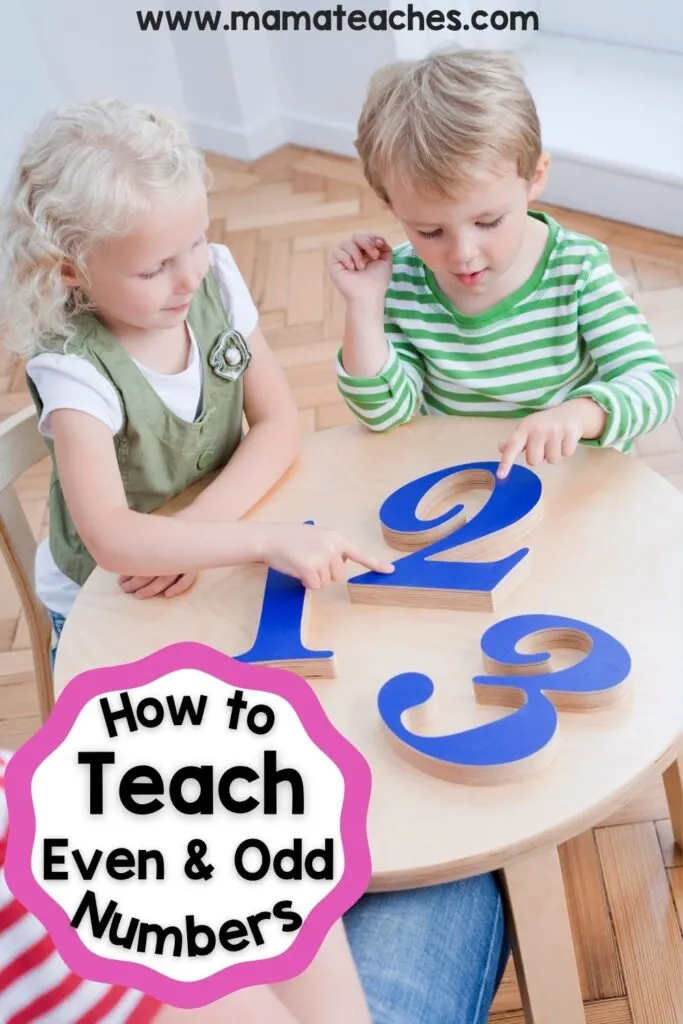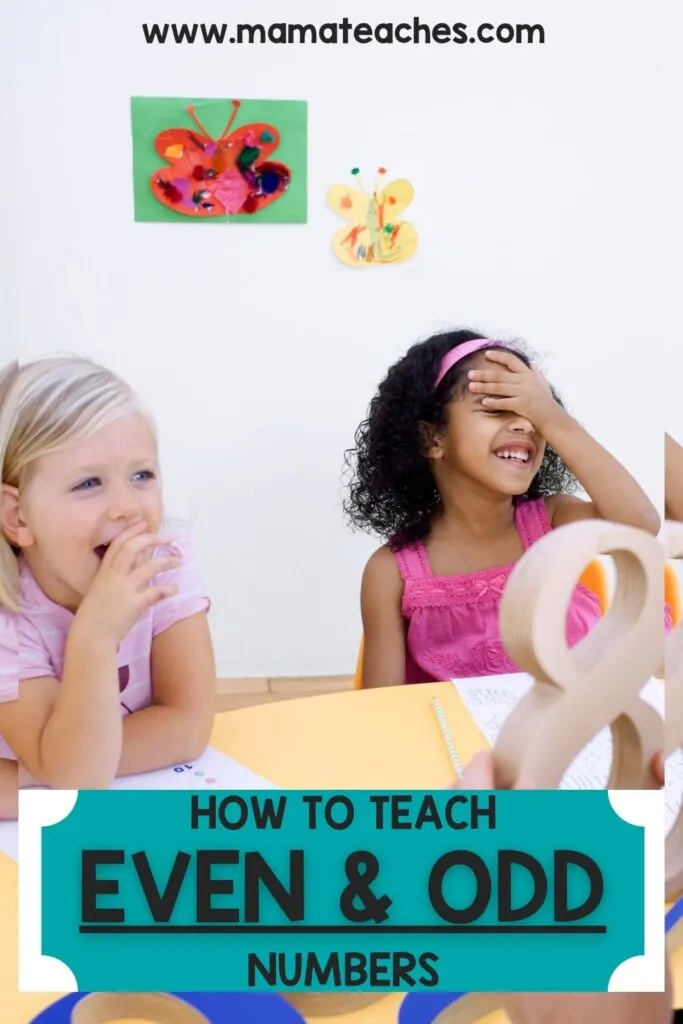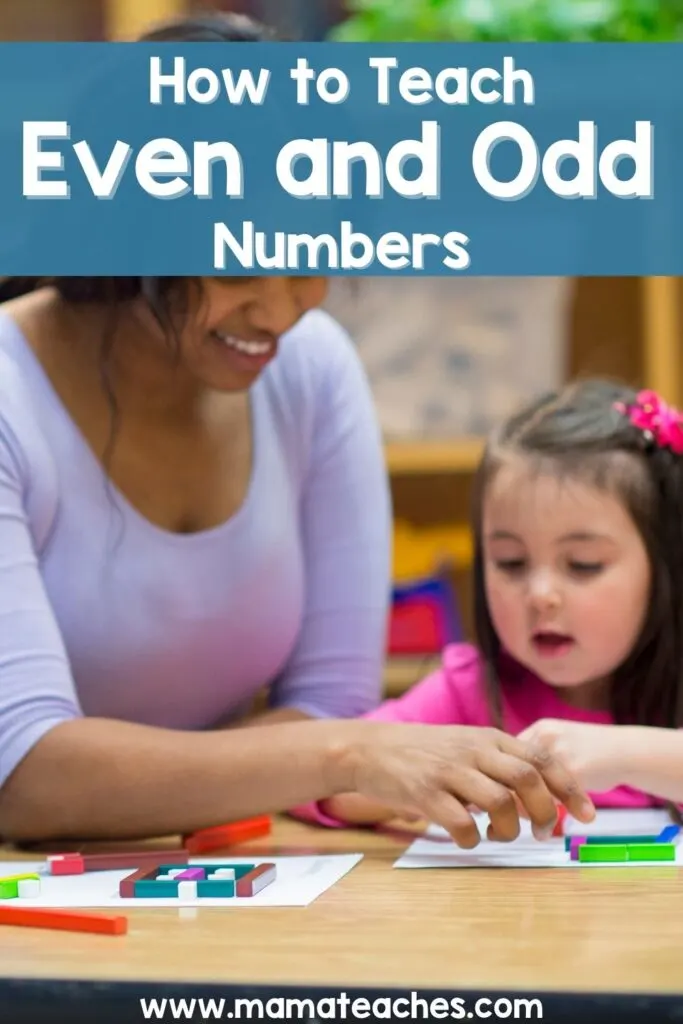Even and odd numbers are a basic mathematical concept.
So how do you teach them in a fun and memorable way?
We’ve got methods for every learning style!
Teaching Even and Odd Numbers to Kids
The whole numbers can be placed into two categories: even and odd.
Recognizing the difference can help you in division and multiplication, so it’s important that you know how to tell them apart.
Typically you introduce a child to this concept in first or second grade, and then review it in the later elementary grades.
In order to understand even and odd numbers, a child must know his numbers and be able to count to 100.
When deciding how to teach even and odd numbers, explore your options!
Here are several ways to teach the concept.

This article contains affiliate links to things that you might like.
How to Introduce Even and Odd Numbers
To introduce the concept of even and odd numbers, use small counters.
Edible counters, like M&Ms, are especially fun to use!
For young learners, you can set up two figures (these can be dolls, action figures, stuffed animals, etc.)
Say, “Do you ever have to share with your brother or sister? You want the sharing to be fair; you both want the same amount. That’s what’s happening here with Fred and Ginger. Their parents have left them some M&Ms (or cookies, toys, etc.) and told them to share.”
Walk through the various numbers 1-10. Can they share 1 M&M evenly?
Not without cutting it.
Can they share 2?
Divide them into 2 piles, one in front of each action figure.
Yes, 2 can be divided evenly.
Write the number 2 on a whiteboard or piece of paper.
Eventually, you will have this list of numbers: 2, 4, 6, 8, 10.
Explain that these are called even numbers because you can divide them evenly without cutting them apart.
The other numbers are not even; they’re odd: 1, 3, 5, 7, 9.
(Technically, 0 is an even number as well, but leave it out of this basic introduction).

How to Teach Even and Odd Numbers Using Colors
We are wired to notice patterns, and children are no different.
Help children learn odd and even numbers by using color.
You can use 3-D numbers in two colors or make your own set with markers on index cards (or use die-cut numbers out of cardstock).
Choose one color for odd numbers (red) and one for even (blue).
This is an especially effective method for visual learners.
Lay the numbers 0-10 on the table.
Ask, “Do you see a pattern?”
They will notice that the colors alternate between red and blue.
Name the even numbers and then the odd numbers.
Chant them (this is an especially important step for auditory learners).
Then form two-digit odd and even numbers, focusing on their last digit.
“This is an even number because it ends with a 2.”
How to Teach Even and Odd Numbers Using Counters
This method of teaching odd and even numbers works especially well with kinesthetic learners.
You will need three-dimensional letters and counters.
Line up the numbers 1-10.
Under the number 2 place two counters side by side.
Say, “Do you see how this counter has a partner? We call numbers that have partners ‘even numbers.’”
Now place a single counter under the number 1, aligning it to the left to show where a missing counter could sit.
“This counter doesn’t have a partner. It’s all alone. We call numbers where the last counter is missing a partner ‘odd numbers.’”
Repeat this process for number 3.
Place a pair of counters directly under the 3 and a single counter under that pair.
“Look at the last counter. Does it have a partner? No? Then it’s an odd number.”
Repeat the process with the number 4, place two pairs of counters underneath the number.
Then do the same for 5, 6, 7, etc.

How to Teach Even and Odd Using a Number Line
Older students can visualize odd and even numbers by using a number line.
Start on the number 0.
Explain that it is the even number starting place.
Now jump over the 1 to land on the 2.
“When I jump 2 units, I land on an even number.”
Using this method, you can show both positive and negative even numbers.
The numbers that you skip are the odd numbers out!
How to Teach Using a Number Chart
This method again shows pattern relationships, which may crystallize understanding for some students (especially your visual learners and logical thinkers).
Use a 100 number chart, where the numbers are listed in rows of ten.
Color in the even numbers in the top row (0-10).
Chant them a few times to memorize them.
Then color in the even numbers in the second row (11-20). Can the child see the pattern?
Repeat this with the remaining rows.
In the end, the chart will look like 5 colored columns.
Point out that all the numbers ending with 2, 4, 6, 8, and 0 are even; the numbers ending in 1, 3, 5, 7, and 9 are odd.

How to Teach Odd and Even Numbers
No matter the learning style, you can teach even and odd numbers in a way that will make them stick.
